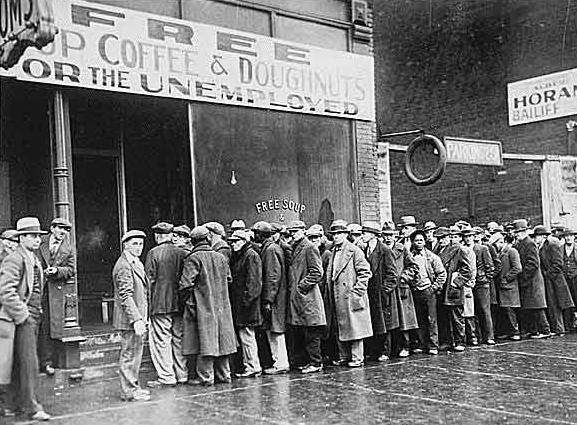American political fortunes have long been tied directly to the economy… so you would think that politicians would do a better job understanding how to improve the economy. We know consumer demand is down – because consumers don’t have the money or home equity they used to have. That alone is keeping the economy down. Businesses, however, are said to have money but they are not spending or investing it. Why? Because for them it’s the early 1920’s all over again.
Our so-called brilliant, Nobel Prize-winning President, for months, has exhorted American businesses to hire employees and invest – as if wishing for an economic recovery would make it so. Recently, however, Democrat and mega-businessman Steve Wynn told the country – and Obama, if he was listening – why cash rich business is not hiring and investing. According to Wynn, “this administration is the greatest wet blanket to business, and progress and job creation in my lifetime . . . those of us who have business opportunities and the capital to do it are going to sit in fear of the President . . .”
President Calvin Coolidge used to say, “The chief business of the American people is business.” Even so, business doesn’t invest just for fun – they invest for profit – and they don’t invest if they think the risk of not making an acceptable profit is too high. I wrote “acceptable” because business weighs the fact that even if they make money, it will be taxed. As such, a business must decide not only if it will be able to make a profit, but will the profit be so much that it would be worth the trouble/risk after taking taxes into consideration. Keep in mind business knows that it carries all of the downside risk and that government will take a good portion of any upside. If at some point the risk gets too high, business investment and spending is stalled.
Today, Steve Wynn, and much of American business, believes that the risk of not making a decent profit is too high for several reasons. For instance, business doesn’t see sufficient consumer demand – so they don’t stock their shelves or expand production as they otherwise might. Regulations and the threat of more regulations are so high that they hold back money to pay for future costs. Taxes and the threat of higher taxes are also high – and that too causes business to hold back spending in order to pay those future taxes. As a result, business investment and spending is stalled.
All of which brings us to the early 1920’s. Back then government created unacceptable risk because it was taking too much of the upside. Democrats under Woodrow Wilson instituted the income tax in 1913 with a top rate of 7%. Just over 3 years later it was 77%. In other words, the federal government was telling Capitalists, “You risk the downside and, if you are lucky enough to make money, on that last, top dollar, we will take 77%.” Not surprisingly, by 1918, we were in a deep recession because of a reduction in war spending and the high tax rates. By the early 1920’s, poor consumer demand and high tax rates caused investors to believe that there was too much risk for them to spend or invest very much.
So what did they do with their money? They parked huge amounts of it in tax-free, risk free, government bonds. Incredibly, rather than risk their money, the rich were being paid tax-free interest by the government. Also not surprisingly, government revenues lagged because business transactions and profits had been greatly reduced by the high tax rates.
Treasury Secretary and Republican Andrew Mellon saw all of that. It confirmed what he knew; namely that the “history of taxation shows that taxes which are inherently excessive are not paid. The high rates inevitably put pressure upon the taxpayer to withdraw his capital from productive business.”
Mellon and his President, Calvin Coolidge, wanted the rich and business to take risks again. To get them to do that, Mellon knew that the risks had to be reduced enough to jump start investment – and like a boulder at rest, Mellon knew it would take a big push to get the investment ball rolling. To do that, they had government lower income tax rates to 25%.
With that, the rich and business decided that, while it wasn’t normally worth taking risks during a recession with those high tax rates, the new rate was sufficiently low enough to take a risk. They believed that they had the opportunity to keep a sufficient amount of the profits they might make. Sure enough, they took risks, they invested and the Roaring 20’s ensued. The subsequent surge in risk-taking created the greatest period of innovation in American history and federal government revenues jumped over 60% because profits soared.
Today, the risk is too high for American business and the rich. They have withdrawn their productive capital from the market place. Government spending, as the failed stimulus bill proves, only increases risk because it is temporary and leads to demands for higher taxes.
The only thing government can do is to truly change today’s psychology of risk. The ONLY way to do that is to lower the costs of regulations and the rate of taxes – not temporarily and not just a little – but as far as the eye can see and substantially. They must do it enough to convince business to take risks again – just like Coolidge and Mellon did in the early 1920’s.

COMMENTS
Please let us know if you're having issues with commenting.